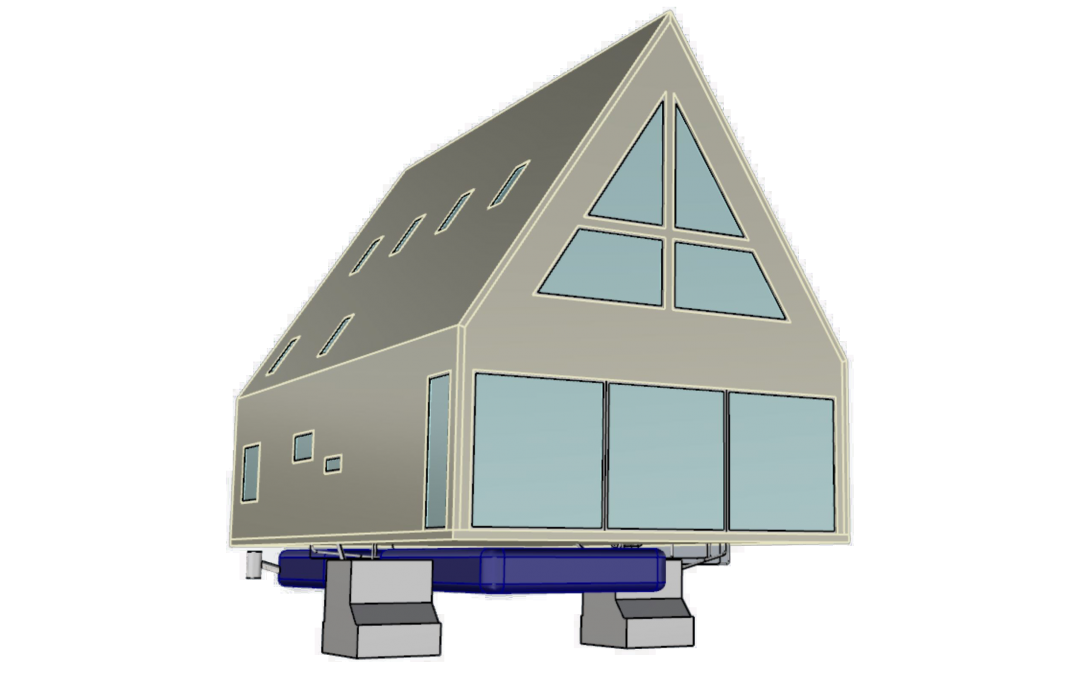
by William | Mar 17, 2021 | Net Zero
Dear Readers,
As much as I believe Baba Yaga is a complex, terrifying, and intrinsically beautiful character in Russian fairy tales…I don’t necessarily want our home to look like her hut. And the two Clivus Multrum composting tanks do exactly that…they make The Seed look like it has two chicken feet.
The conundrum:
The U.S. designs of the Clivus Multrum are tall. In the design above, we have two M2 models of the Clivus Multrum. They are each designed for an average of 15 daily uses, and to accommodate three people. They each are between 6.5 and 7 feet high, and that height does not include the required 12’’ of extra space above the tank for ventilation equipment. These compost holding tanks will also be enclosed in the home’s envelope, and therefore would require additional height allowances.
The height becomes a problem due to the fact that William and I want to avoid digging. For prefabrication purposes, it is easier if we do not have to dig in order to install the tanks. For our own personal purposes, we simply want to avoid disrupting the natural soils on our land as much as possible.
Two Possible Solutions:
One, we could go Aussie. The Australian versions of the Clivus Multrum are significantly lower in height. A CM10 model is designed for an average of 25 daily uses, and is only 3.6 feet high. While the Australian version is certified to Australian and New Zealand wastewater treatment standards by SAI Global…they are not NSF certified. From my little research into PA DEP code, only NSF certified wastewater treatment products will be considered as acceptable.
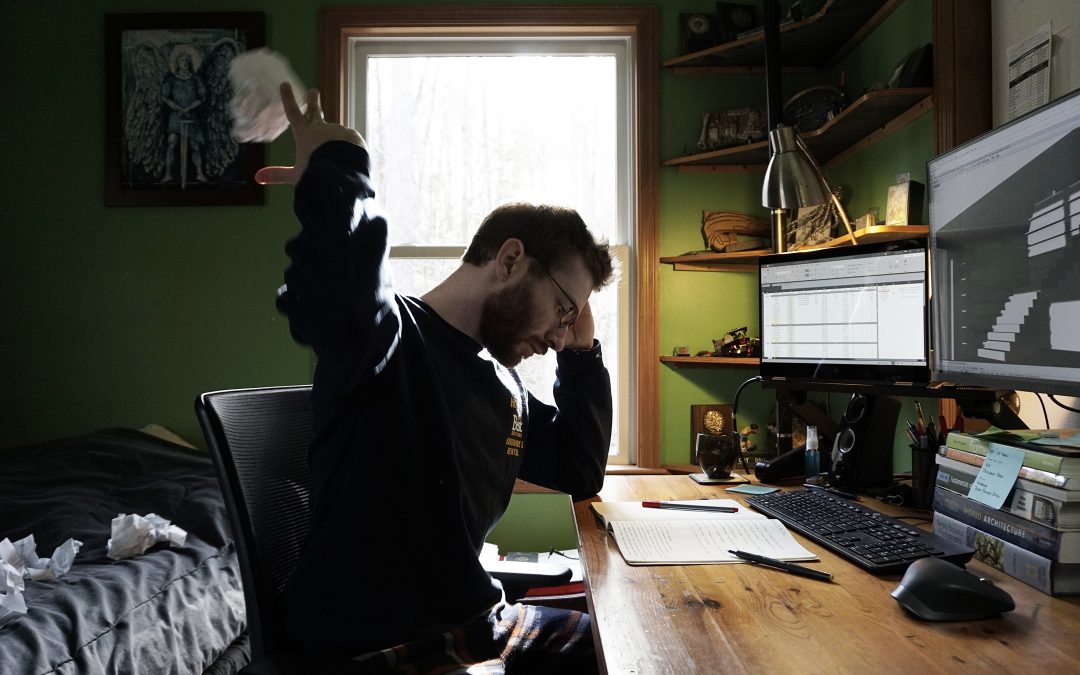
by William | Jan 27, 2021 | Small Footprint
Dear Readers,
The title of this blog makes me chuckle…our whole house is one large problem. And the reason we are trying to build it, is to solve environmental and social problems. We are facing a problem, so to conquer another problem. Problems, problems, problems. The funny thing about it, is that the more William and I say the word “problem” to one another, the less it sounds like an actual word, and more like something that is just there. And we need to have fun navigating it.
Ready? Try it with me: Problem. Problem. Problem. Problem. Problem. Problem. Problem. Problem.
And now that you have thoroughly realized that you have wasted your time repeating something that initially invokes large amounts of stress…and in reality, it is just a ‘problem,’ we take a deeeeeeeeepppppp breattthhhhh….
….and we move forward.
So! What are William and I’s problems? More specifically, what are the large problems we need to solve before we begin to build The Seed? Well, large problems that don’t include funding…that’s a whole other problem on its own. Problems. Ten of them, for now, to be exact.
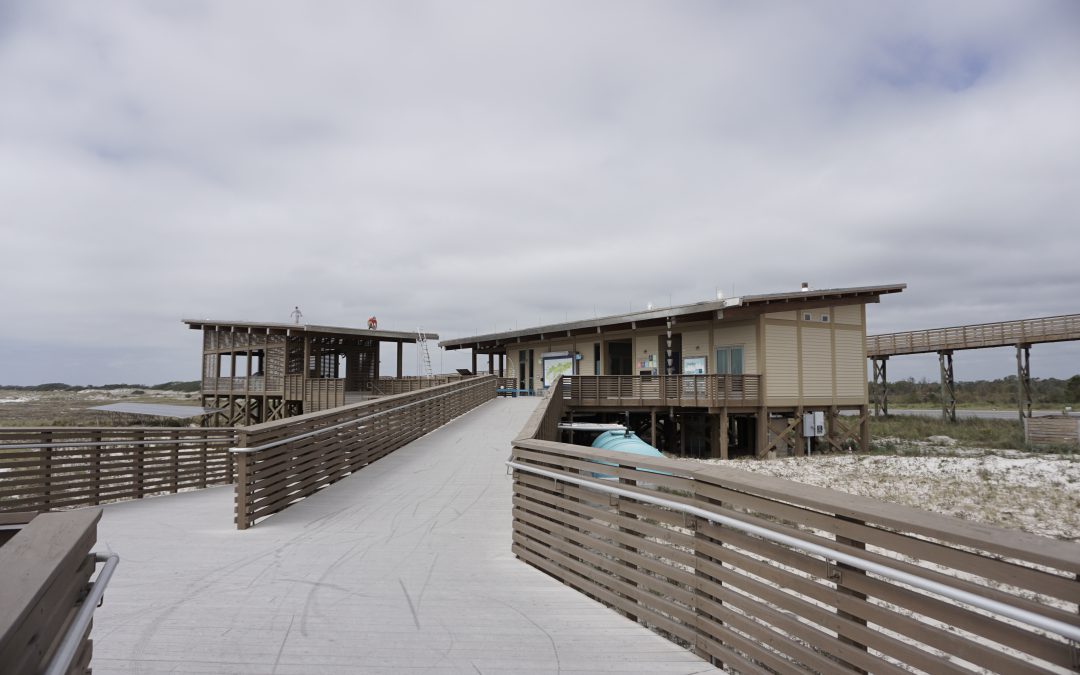
by William | Nov 4, 2020 | Small Footprint
Dear Readers,
Alligators! Cottonmouths! Sharks! Oh my!!
Our honeymoon 3.0 (celebrating our two year anniversary!) was certainly filled with all three…all thanks to the beautiful, nature-loving, audacious and adventurous, Farren (oh, and her fellow partner in wildlife and everyday life endeavors, Tom!). The two of them introduced William and I to the gulf of Alabama in a bold and very real way. Within an hour of being there, I already had a full-out biology lesson on seashells and their former inhabitants…especially about who eats who…I never knew snails were responsible for that lil’ perfectly formed hole you sometimes see on small seashells (which I always thought was just a convenience for making seashell jewelry)…they just drill their little snail tongues right on in there and suck up the insides…
Beyond the seashells, Farren and Tom, both working for the environmental integrity of Gulf Shores, Alabama, took us on many adventures. We went on excursions through the park and conservation areas, unintentional swims with blacktip sharks, alligator sightings, and a personal tour of a real-life Living Building Challenge certified building: Alabama’s Gulf State Park Interpretive Center…
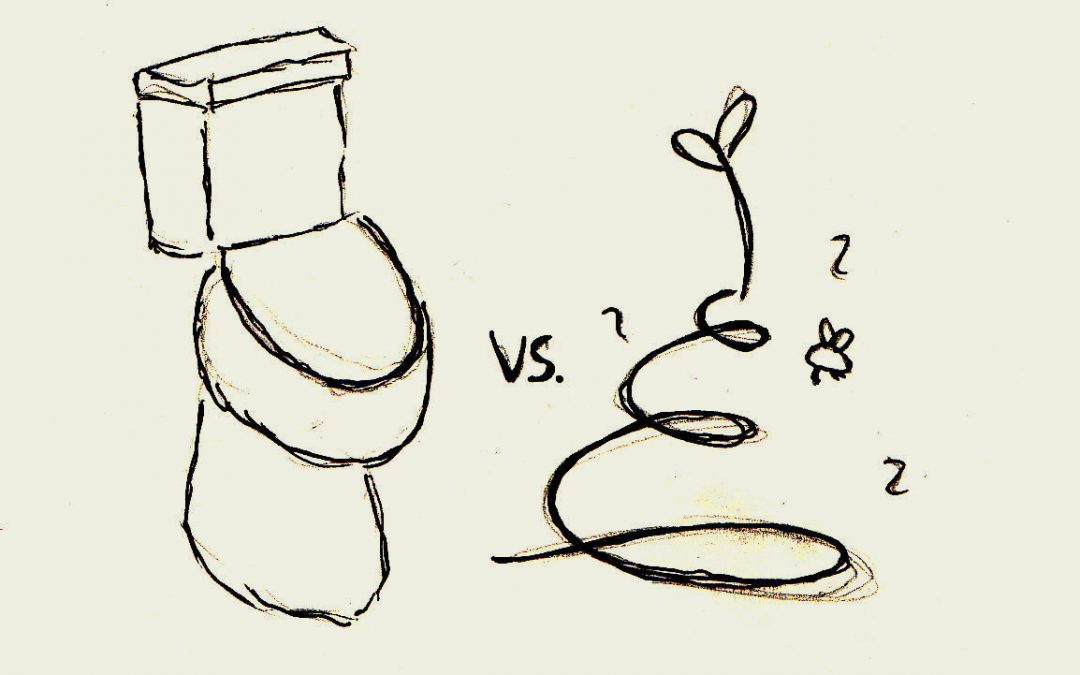
by William | Jun 24, 2020 | Net Zero, Small Footprint
Dear Readers,
If you have read the “Our Waste Goes Where?” blog (and if you have, I applaud you..that was a rough one..) or are familiar with how wastewater treatment generally works, whether it be a septic tank or a treatment facility, you may be wondering how the Clivus Multrum composting toilet and greywater system is beneficially different. I know that I was certainly curious…I mean, the results are similar. Most of the solid and liquid waste, whether flushed or composted in a hole, eventually find their way back into the great world as either fertilizer or drainage. So, what makes the idea of not just specifically the Clivus Multrum system, but a composting toilet in general, so enticing?
Since William and I are looking to build The Seed in a rural area, I am going to directly compare a composting toilet and greywater system to what is most often offered to fellow rural inhabitants…a septic tank.
Composting Toilet
A composting toilet is, for us, preferable to a septic tank for three main reasons.
1) It makes the home, and encourages the inhabitants within it to be, holistically self-sustaining, or, our version of net-zero living. Utilizing a composting toilet allows the home to have a reduced reliance and impact on the physical site it is on.
There is no digging a sand mound, or installing deep in the earth a septic tank. The solid waste that settles in the tank does not need to be pumped out by a big truck, and then subsequently dropped off at a public wastewater treatment facility.
Rather, the solid and liquid waste that the inhabitants generate rest in separate bins until they can be returned to the earth as stable soil fertilizer. The owner or resident (William and I!) can do this themselves with a simple and common tool…a shovel.
A composting toilet also results in a reduction of the home’s overall water usage. If you opt for the standard composting toilet, then you use no water when contributing your waste to compost. None. Even if you choose the foam flush composting toilet, you only use 6 ounces of water per flush. If you are relying on a rainwater pillow for your water supply, this is a HUGE plus…as well as a beautiful help in achieving net-zero living.
The greywater garden for the greywater filtration and distribution would be the only alteration required to the land…and that is because we would physically be planting a garden which would aid in filtration and dispersal. Yay, plants!
Not only would a composting system aid the home in being holistically net-zero, but it would better enable the inhabitants to take account for their own waste. Before researching for the blog, “Our Waste Goes Where??”, I honestly had no idea what happened to my processed nutrients. I figured it went to our septic tank, which I knew had to be pumped once every couple years…but I had no idea that it eventually went to a wastewater treatment facility, and what that process looked like. Someone else took care of it. All I had to do was sit on the toilet, do my thing, and flush. Done. The mess was no longer mine. Because William and I intend to raise children in this crazy idealistic home of ours, we see the composting toilet as a great life lesson for them…in William’s (and a lil’ of Shelby’s words), it will be “teaching our children to not expect other people to clean up their nasty sh…enanigans.”
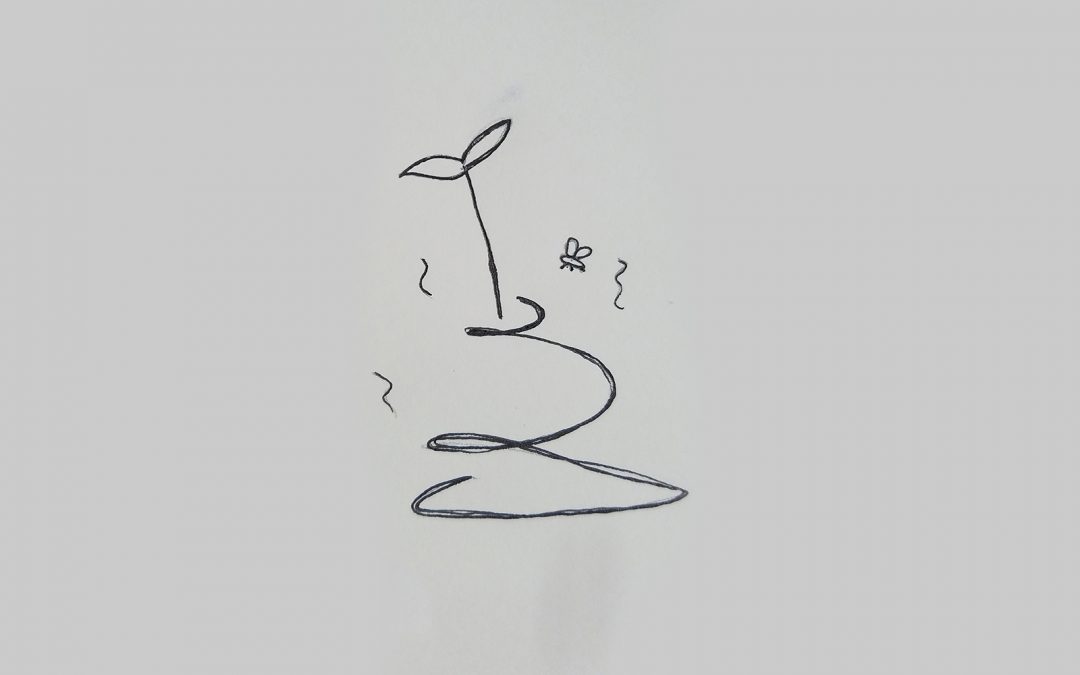
by William | Jun 17, 2020 | Net Zero, Small Footprint, Uncategorized
Dear Readers,
The Clivus Multrum composting toilet is kinda cool in that its name gives the bases of how it works in two words. ‘Clivus’ is Latin for ‘incline,’ and ‘multrum’ is Swedish for ‘compost room.’ And, in essence, the Clivus Multrum composting toilet is a toilet (basically a hole) that lets waste fall into an inclined composting room. Bam. Boom. Blog is basically done.
Ha! Kidding. To give justice to the simplistic yet holistically functional toilet system, it deserves a slightly more in-depth explanation. I promise, this will be simpler than the blog about wastewater treatment facilities…
Their toilets are much more sophisticated looking than a dark, deep hole you squat or stand over. They actually look like a real toilet! Some even use a small amount of foamy, soapy water (no more than 6 ounces) to clean the bowl when you use the flush mechanism…it’s like you would never know that you just sat on top of, and contributed to, compost.
When you donate your waste as tribute to earth fertilizer, it falls down into that inclined chamber. This incline is super important: it is what keeps the urine and the poop from being one, large, smelly, conglomeration. Gravity forces the urine to filtrate downward through the solid wastes, allowing the solid waste to remain dry (and unsmelly). However, when the urine gets to the bottom of the chamber…it is no longer urine…like a butterfly, the caterpillar has gone through metamorphosis!
Wanna know the secret to changing your urine to something else (maybe not necessarily as pretty as a butterfly…)? I sure did…





